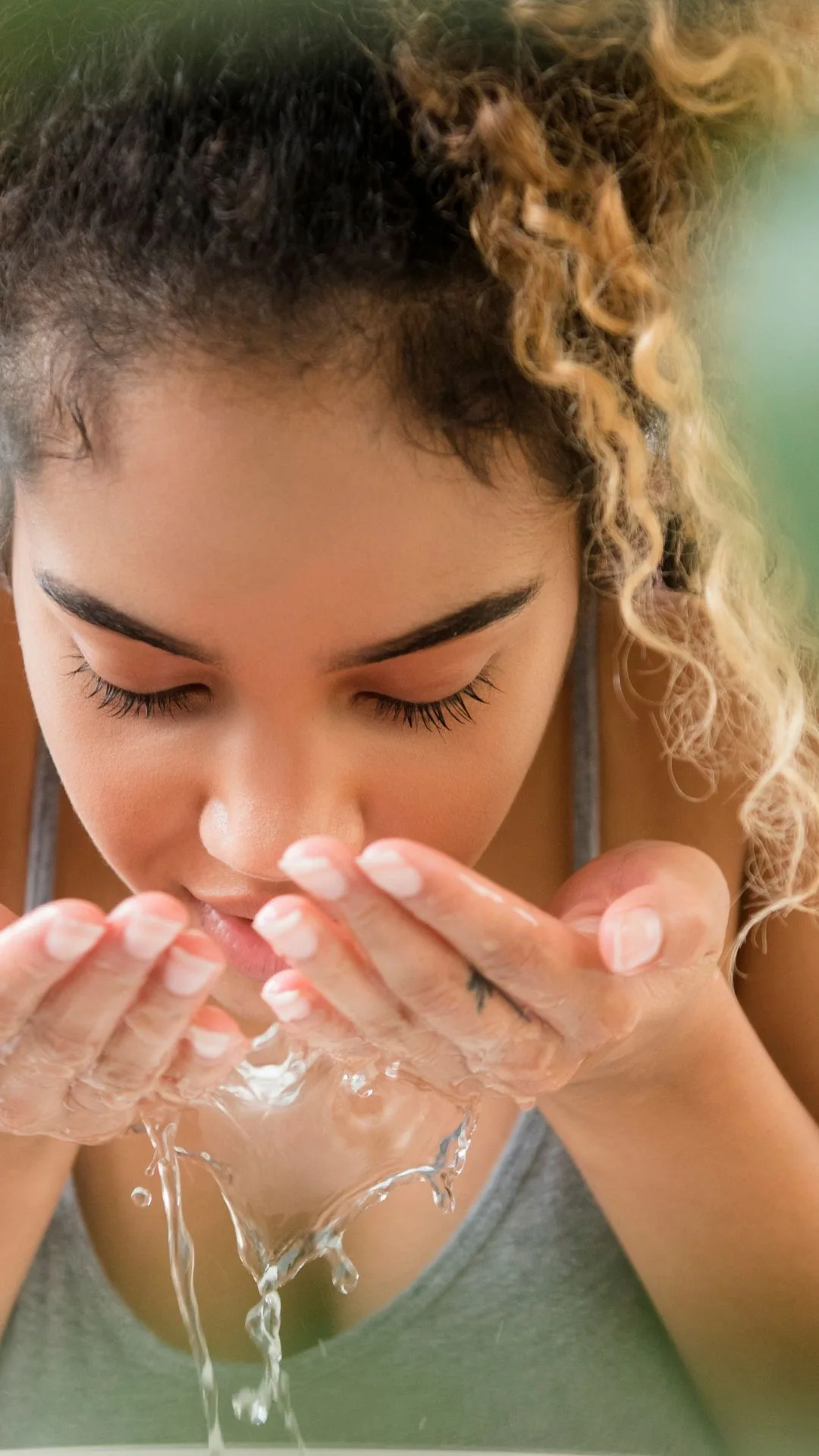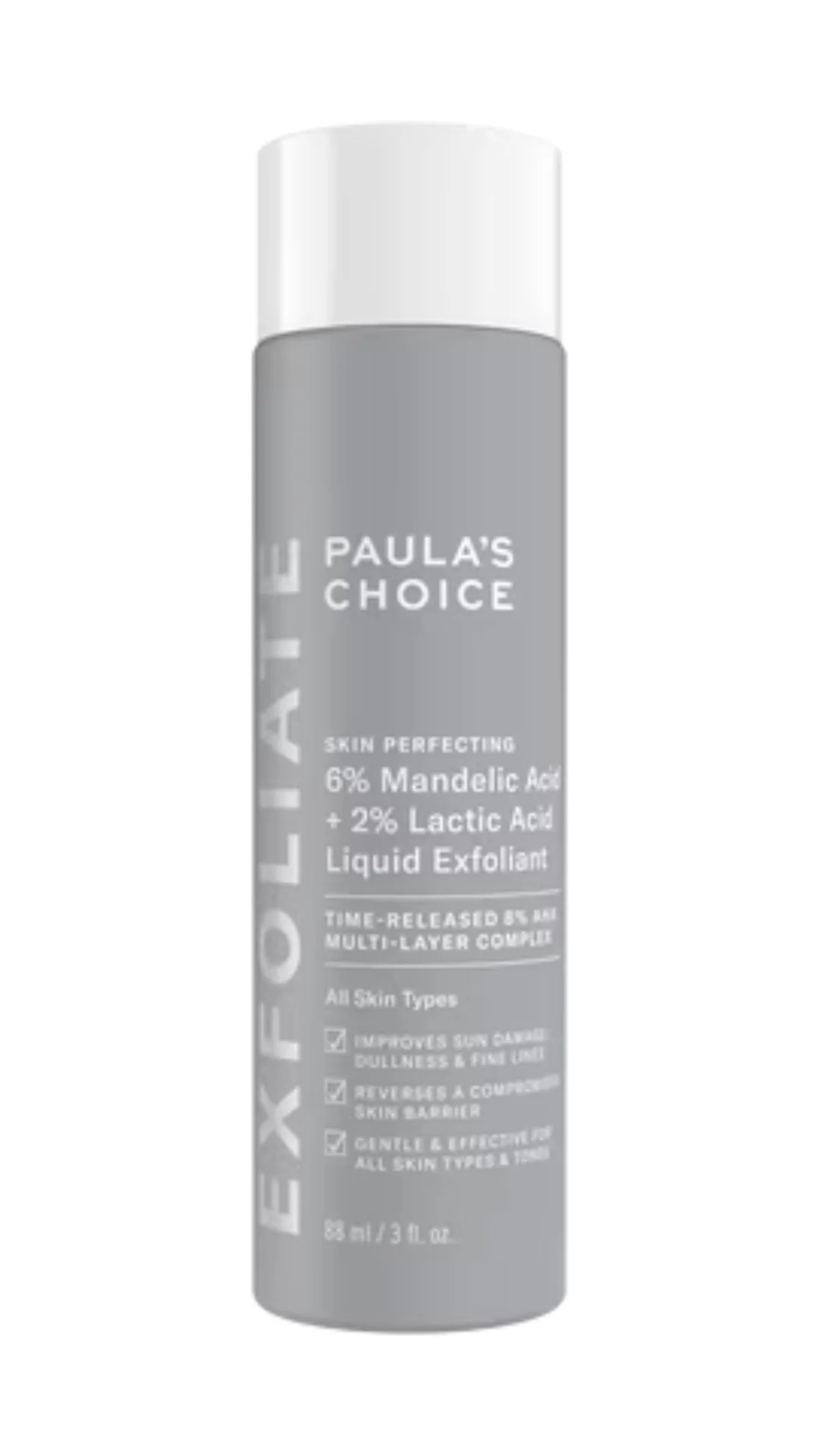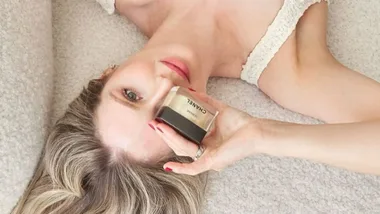When it comes to big purchases, we tend to want the best. The fastest car, the most luxurious hotel, the biggest diamond. In the last few years, we’ve seen the same approach taken towards skincare; the most efficacious, most concentrated, and most active skincare to get the best results.
However, like most rewarding things in life, good things come to those who wait. Skincare is a marathon not a race.
While we see countless potent formulas trotted out across social media, with celebrities marketing 16-step skincare routines so convoluted you need a rocket science degree to follow along, ‘cannonballing’ your skin barrier with these extremely potent actives could have the opposite effect.
Why do we say ‘cannonballing’? Well, just like how a powerful cannonball creates holes in the earth when it lands, using too much powerful active skincare can create major damage to your skin barrier, rather than improving it.

General practitioner and cosmetic doctor Dr Prasanthi Purusothaman, says the magic of using active skincare comes when we go ‘low and slow’.
“I think it is a wonderful thing that consumers are becoming increasingly educated on ingredients, percentages and how they benefit the skin,” she tells marie claire Australia. “With social media, people are being informed earlier.”
However, she adds that sometimes people are embarking on new skincare routines, “without proper guidance or understanding of their skin or the interplay of these actives on possibly damaging the skin barrier (which is its primary function).”
The low-and-slow method is increasingly being talked about online, with some brands peeling away from claims of how ‘strong’ a product is, and towards how it will nourish and care for your skin across time.
One such brand is Fresh Beauty, whose newly formulated Lotus range embraces viral AHAs like glycolic and citric acid in lower, more tolerable doses to keep the skin feeling happy and supported while still resurfacing the skin.
Consumer studies found that the Dream Serum smoothed skin texture and added radiance, proving that it ‘does the thing’ without being so aggressive.
“We wanted to create an exfoliating serum that’s gentle on skin, and that’s when we had an “aha” moment to use prickly pear flower extract,” explains Fresh co-founder Lev Glazman. “Its resurfacing properties paired with a duo of AHAs turned out to be a dreamy combination for the smoothest, most radiant complexion.”

Meanwhile, Australian skincare brand Status Quo’s founding purpose is to enhance sensitive skin without ‘cannonballing’ it and degrading the skin’s barrier. Their ‘skin health first’ approach involves using a series of biotechnology and plant extracts to mimic the effect of popular actives, without flaring sensitive skin.
The demand for this skincare niche is high now, but Dr Purusothaman does understand why it’s been so hard to separate ourselves from overly potent skincare.
“It’s kinda like when you want to lose weight perhaps, and you think smashing yourself at the gym every single day, maybe twice a day, is the answer to see results, but this can put a really strain on the body and drive cortisol production in some people and end up being really counterintuitive, the same goes for skin,” she explains.
Dr Purusothaman says there is a hastiness about the internet which drives a perception that new, and very active, skincare should make our skin better in a few days.
She adds that often people with the troublesome skin barriers, such as those suffering from acne, are motivated to find results quickly, while really, they need to be more careful about not ‘yo-yoing’ from one active to another.
“You wouldn’t run a marathon without training. Getting to that sweet spot with your skin and with skincare is a slow and steady approach. Akin to the hare and the turtle fable, we want to be a turtle and our skin will win,” she explains.
It’s also important to stick to a skincare plan once you have one.
“My other ethos (which popular dermatologist Dr Shereene Idriss in the USA often discusses) is that consistency is often more important than potency,” she adds.
“It is consistent use of actives that are usually the feature of study designs that reap the stated benefits of skincare actives, [such as] collagen and elastin stimulation, fading of dark spots or hyperpigmentation, unclogging of pores, reduced redness and inflammation, improved hydration.”
Which Actives Should We Go Low And Slow With?

The main two sorts of actives we need to be careful with are acids (chemical exfoliants) and vitamin A (retinoids).
Chemical Exfoliants (AHA, BHA, PHA)
These ingredients remove dead skin cell build up and create intentional “epidermal damage” that is controlled.
Dr Purusothaman says that this controlled mechanism breaks up the mortar between our skin’s bricks (the barrier) allowing old cells to lift off and revealing new cells underneath.
“[This prompts skin regeneration and remodelling, regeneration of keratinocytes (skin cells) overtime leading to a thicker epidermis, the production and deposition of new collagen and elastin, and the reorganisation of structural scaffold proteins and dermal connective tissue which in simple speak means improving overall skin appearance tone and texture to restore a ‘youthful’ appearance of the face, neck, and hands,” she explains.
However, when overused, it can be easy to overdo it and create uncontrolled damage that is without benefit. “Starting with milder AHA’s and working up the rung with frequency first, before potency and then smaller molecular size can be a great way to go (e.g. mandelic before lactic before glycolic or lower percentages of any to start, lower frequency of use i.e. once a week).”
Vitamin A Or Retinoids (retinol esters, retinol, retinal and tretinoin)
This ingredient works similarly. “It works by binding to retinoic acid receptors found on the outer membrane of cells leading to an increase in collagen production, growth of new cells that induce epidermal (outer skin layer) thickening, repair skin cell damage, increase skin cell turnover (exfoliate), treat and regulate hyperpigmentation. So the same issue of overdoing the skin cell turnover leading to barrier compromise apply,” Dr Purusothaman says.
Is There Proof That ‘Low And Slow’ Is As Efficacious?

The good news is that the low and slow method is backed by science. This study, published in the Journal of Cosmetic Dermatology, found that repeated use of a lower 5 per cent glycolic acid had a good effect in the treatment of mild acne.
Dr Purusothaman explains that many studies on niacinamide actually look at a 2-4 per cent potency, rather than very high concentrations of 10-15 per cent commonly seen in hyper-active skincare.
“If we are able to keep the barrier happy and slowly help it along, rather than hit it hard, and prioritise employing consistent use of non-irritating less ‘sexy’ products like a good moisturizer and regular sunscreen use…we can still achieve great results, because we work with our skin, rather than against it,” she says.
Is There Still Purpose To Potent Skincare?
That is not to say that there is no purpose to potent skincare. The likes of tretinoin and other prescription skincare will always have a place.
It’s just that we don’t always need the most concentrated of each skincare step to have great skin.
What Is An Ideal Minimal Skincare Routine?
Morning
- Cleanse with water
- Active serum of choice (could be vitamin C, niacinamide, azelaic acid etc.)
- Moisturiser that fortifies the skin barrier (glycerin, cholesterol, ceramides, fatty acids)
- Sunscreen
Evening
- Double cleanse
- Active serum, applied 1-2 times a week and worked up to daily (an AHA or retinoid but never together)
- Moisturise (30 mins later)
- Give yourself ‘off’ nights, where you simply cleanse, moisturise and apply a thin occlusive layer such as Vaseline or Dermeze to seal moisture in
What Are Some ‘Low And Slow’ Products To Try?

Precious La Mousse Gentle Cleansing Foam, $135.00 from Clarins
A gentle cleansing foam that promotes skin hydration and radiance.

Lotus Youth Preserve Resurfacing Dream Serum, $98, Sephora
A resurfacing night serum to boost radiance and reduce dark spots and fine lines.

Status Quo The Regenerative Facial Serum, $99.40, Status Quo
Designed to resurface and regenerate the skin reducing fine lines, wrinkles and inflammation.

Elizabeth Arden Ceramide Retinol + HPR Rapid Skin Renewing Water Cream, $155, Adore Beauty
Gentle enough for first time retinol users, it utilizes a special ester that binds to the retinol receptors only, causing less irritation.

Paula’s Choice 6% Mandelic Acid + 2% Lactic Acid Liquid Exfoliant, $47, Paula’s Choice
This gentle blend is designed to help skin turnover without stripping the natural barrier.



